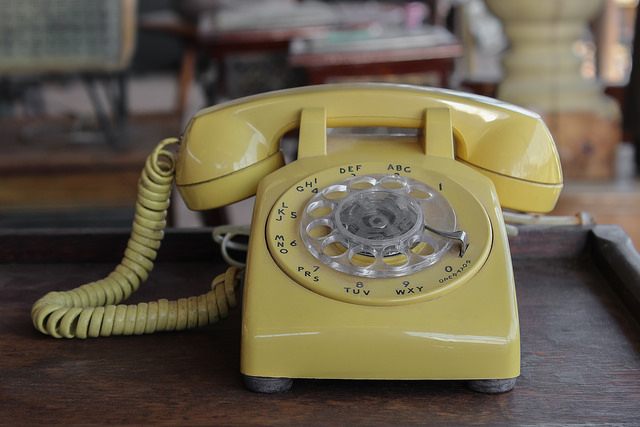Archive for the ‘Clarity’ Category
Always Tight on Time
 There always far more tasks than there is time. Same for vacations and laundry. And that’s why it’s important to learn when-and how-to say no. No isn’t a cop-out. No is ownership of the reality we can’t do everything. The opposite of no isn’t maybe; the opposite of no is yes while knowing full well it won’t get done. Where the no-in-the-now is skillful, the slow no is unskillful.
There always far more tasks than there is time. Same for vacations and laundry. And that’s why it’s important to learn when-and how-to say no. No isn’t a cop-out. No is ownership of the reality we can’t do everything. The opposite of no isn’t maybe; the opposite of no is yes while knowing full well it won’t get done. Where the no-in-the-now is skillful, the slow no is unskillful.
When you know the work won’t get done and when you know the trip to the Grand Canyon won’t happen, say no. Where yes is the instigator of dilution, no is the keystone of effectiveness.
And once it’s yes, Parkinson’s law kicks you in the shins. It’s not Parkinson’s good idea or Parkinson’s conjecture – it’s Parkinson’s law. And it’s a law is because the work does, in fact, always fill the time available for its completion. If the work fills the time available, it makes sense to me to define the time you’ll spend on a task before starting the task. More important tasks are allocated more time, less important tasks get less and the least important get a no-in-the-now. To beat Parkinson at his own game, use a timer.
Decide how much time you want to spend on a task. Then, to improve efficiency, divide by two. Set a countdown timer (I like E.gg Timer) and display it in the upper right corner of your computer screen. (As I write this post, my timer has 1:29 remaining.) As the timer counts down you’ll converge on completeness.
80% right, 100% done is a good mantra.
I guess I’m done now.
Image credit — bruno kvot
When doing new work, you’ll be wrong.
 When doing something from the first time you’re going to get it wrong. There’s no shame in that because that’s how it goes with new work. But more strongly, if you don’t get it wrong you’re not trying hard enough. And more strongly, embrace the inherent wrongness as a guiding principle.
When doing something from the first time you’re going to get it wrong. There’s no shame in that because that’s how it goes with new work. But more strongly, if you don’t get it wrong you’re not trying hard enough. And more strongly, embrace the inherent wrongness as a guiding principle.
Take Small Bites. With new work, a small scope is better than a large one. But it’s exciting to do new work and there’s a desire to deliver as much novel usefulness as possible. And, without realizing it, the excitement can lead to a project bloated with novelty. With the best intentions, the project team is underwater with too much work and too little time. With new work, it’s better to take one bite and swallow than three and choke.
Ratchet Thinking. With new work comes passion and energy. And though the twins can be helpful and fun to have around, they’re not always well-behaved. Passion can push a project forward but can also push it off a cliff. Energy creates pace and can quickly accelerate a project though the milestones, but energy can be careless and can just as easily accelerate a project in the wrong direction. And that’s where ratchet thinking can help.
As an approach, the objective of ratchet thinking is to create small movements in the right direction without the possibility of back-sliding. Solve a problem and click forward one notch; solve a second problem and click forward another notch. But, with ratchet thinking, if the third problem isn’t solved, the project holds its ground at the second notch. It takes a bit more time to choose the right problem and to solve it in a way that cannot unwind progress, but ultimately it’s faster. Ratchet thinking takes the right small bite, chews, swallows.
Zero Cost of Change. New work is all about adding new functions, enhancing features and fixing what’s broken. In other words, new work is all about change. And the faster change can happen, the faster the product/service/business model is ready for sale. But as the cost of change increases the rate of changes slows. So why not design the project to eliminate the cost of change?
To do that, design the hardware with a bit more capability and headroom so there’s some wiggle room to handle the changes that will come. Use a modular approach for the software to minimize the interactions of software changes and make sure the software can be updated remotely without customer involvement. And put in place a good revision control (and tracking) mechanism.
Doing new work is full of contradictions: move quickly, but take the time to think things through; take on as much as you can, but no more; be wrong, but in the right way; and sometimes slower is faster.
But doing new work you must.
image credit – leasqueaky
How To Learn Quickly
 When the work is new, it all comes down to learning. And with learning it all comes down to three questions:
When the work is new, it all comes down to learning. And with learning it all comes down to three questions:
- What do you want to learn?
- What actions will take to learn what you want to learn?
- How will you decide if you learned what you wanted to learn?
There are many definitions of learning. To me, when your beliefs change, that’s learning. If your hunch moves to a validated idea, that’s learning. If your understanding of a system moves from “I don’t know” to “I know a little bit.”, that’s learning. If you believed your customers buy your product for Feature A and now you know they really buy it because of Feature B, that’s learning.
What do you want to learn? The best place to start is to clearly define what you want to learn. Sounds easy, but it’s not. Some of the leading thinking recommends you define a formal hypothesis. I don’t like that word. It’s scary, intimidating and distracting. It’s just not helpful. Instead, I suggest you define a Learning Objective. To do that, complete this sentence:
I want to learn if the customer ____________________.
It may take several iterations/meetings to agree on a Learning Objective, but that’s time well spent. It’s faster to take the time to define what you want to learn than to quickly learn something that doesn’t matter. And define the Learning Objective as narrowly as possible. The tighter the Learning Objective, the faster you can learn it.
What actions will you take to learn what you want to learn? In other words, for every Learning Objective create a Learning Plan. Use the Who, What, When format. Define Who will do What and When they’ll be done. To increase the learning rate, define the minimum work to fulfill the narrowly-defined Learning Objective. Just as you defined the Learning Objective narrowly, define the Learning Plan narrowly. And to further speed the learning, set constraints like – no one can travel to see customers; no more than five customers can be contacted; and the Learning Plan must be completed in two days. You’re not looking for large sample sizes and statistical significance; you’re looking to use your best judgement supported by the minimum learning to create reasonable certainty.
How will you decide if you learned what you wanted to learn? Learning requires decisions, decisions require judgement and judgement requires supporting information. As part of the Learning Plan, define the Learning Information you’ll collect/capture/record to support your decisions. Audio recordings are good and video is better. For fast learning, you can record a phone call with a customer or ask them to share their webcam (and record the feed) as you talk with them. Or you can ask them to shoot some video with their smart phone to provide the information needed to achieve you Learning Objective.
To analyze the data, it’s best to review the audio/video as a group and talk about what you see. You should watch for body language as well as listen to the words. Don’t expect complete agreement among your team and expect to create follow-on Learning Objectives and Learning Plans to answer the open questions. Repeat the process until there’s enough agreement to move forward, but don’t wait for 100% consensus.
When you present your learning to company leadership, show the raw video data that supports your learning. Practically, you’ll connect company leaders to customers and let the customers dispel long-held biases and challenge old thinking.
There’s nothing more powerful than a customer telling your company leaders how things really are.
Image credit – Thomas Hawk
Diabolically Simple Questions
 Today’s work is complicated with electronic and mechanical subsystems wrapped in cocoons of software; coordination of matrixed teams; shared resources serving multiple projects; providing world class services in seventeen languages on four continents. And the complexity isn’t limited to high level elements. There is a living layer of complexity growing on all branches of the organization right down to the leaf level.
Today’s work is complicated with electronic and mechanical subsystems wrapped in cocoons of software; coordination of matrixed teams; shared resources serving multiple projects; providing world class services in seventeen languages on four continents. And the complexity isn’t limited to high level elements. There is a living layer of complexity growing on all branches of the organization right down to the leaf level.
Complexity is real, and it complicates things. To run projects and survive in the jungle of complexity it’s important to know how to put the right pieces together and provide the right answers. But as a leader it’s more important to slash through the complexity and see things as they are. And for that, it’s more important to know how ask diabolically simple questions (DSQ).
Project timelines are tight and project teams like to start as soon as they can. Too often teams start without clarity on what they’re trying to achieve. At these early stages the teams make record progress in the wrong direction. The leader’s job is to point them in the right direction, and here’s the DSQ to set them on their way: What are you trying to achieve?
There will likely be some consternation, arm waiving and hand wringing. After the dust settles, help the team further tighten down the project with this follow-on DSQ: How will you know you achieved it?
For previous two questions there are variants that works equally well for work that closer to the fuzzy front end: What are you trying to learn? and How will you know you learned it?
There is no such thing as a clean-sheet project and even the most revolutionary work builds on the existing system. Though the existing business model, service or product has been around for a long time, the project team doesn’t really know how it works. They know they should know but they’re afraid to admit it. Let them off the hook with this beauty: How does it work today?
After the existing system is defined with a simple block diagram (which could take a couple weeks) it’s time to help the project team focus their work. The best DSQ for the job: How is it different from the existing system? If the list is too long there’s too much newness and if it’s too short there’s not enough novelty. If they don’t know what’s different, ask them to come back when they know.
After the “what’s different” line of questioning, the team must be able to dive deeper. For that it’s time one of the most powerful DSQs in the known universe: What problem are you trying to solve? Expect frustration and complicated answers. Ask them to take some time and for each problem describe it on a single page using less than ten words. Suggest a block diagram format and ask them to define where and when the problem occurs. (Hint: a problem is always between two components/elements of the system.) And the tricky follow-on DSQ: How will you know you solved it? No need to describe the reaction to that one.
Though not an exhaustive list, here are some of my other favorite DSQs:
Who will buy it, how much will they pay, and how do you know?
Have we done this before?
Have you shown it to a real customer?
How much will it cost and how do you know?
Whose help do we need?
If the prototype works, will we actually do anything with it?
Diabolically simple questions have the power to heal the project teams and get them back on track. And over time, DSQs help the project teams adopt a healthy lifestyle. In that way, DSQs are like medicine – they taste bad but soon enough you feel better.
Image credit – Daniela Hartmann
How To Allocate Resources
 How a company allocates its resources defines its strategy. But it’s tricky business to allocate resources in a way that makes the most of the existing products, services and business models yet accomplishes what’s needed to create the future.
How a company allocates its resources defines its strategy. But it’s tricky business to allocate resources in a way that makes the most of the existing products, services and business models yet accomplishes what’s needed to create the future.
To strike the right balance, and before any decisions on specific projects, allocate the desired spending into three buckets – short, medium and long. Or, if you prefer, Horizon 1, 2 and 3. Use the business objectives to set the weighting. Then, sit next to the CFO for a couple days and allocate last year’s actual spending to the three buckets and compare the actuals with how resources will be allocated going forward. Define the number of people who will work on short, medium and long and how many will move from one bucket to another.
To get the balance right, short term projects are judged relative to short term projects, medium term projects are judged relative to medium term projects and the long term ones are judged against their long term peers. Long term projects cannot be staffed at the expense of short term projects and medium term projects cannot take resources from long term projects. To get the balance right, those are the rules.
To choose the best projects within each bucket, clarity and constraints are more important than ROI. Here are some questions to improve clarity and define the constraints.
How will the customer benefit? It’s best to show the customer using the product or service or experiencing the new business model. Use a hand sketch and few, if any, words. Use one page.
How is it different? In the hand sketch above, draw the novel (different) elements in red.
Who is the new customer? Define where they live, the language they speak and how they get the job done today.
Are there regional constraints? Infrastructure gaps, such as electricity, water, transportation are deal breakers. Language gaps can be big problems, so can regulatory, legal and cultural constraints. If a regional constraint cannot be overcome, do something else.
How will your company make money? Use this formula: (price – cost) x volume. But, be clear about the size of the market today and the size it could be in five years.
How will you make, sell and service it? Include in the cost of the project the cost to overcome organizational capacity/capability constraints. If cost (or time) to close the gaps is prohibitive, do something else.
How will the business model change? If it won’t, strongly consider a different project.
If the investigations show the project is worthwhile, how would you staff the project and when? This is an important one. If the project would be a winner, but there is no one to work on it, do something else. Or, consider stopping a bad project to start the good one.
There’s usually a general tendency to move medium term resources to short term projects and skimp on long term projects. Be respectful of the newly-minted resource balance defined at the start and don’t choose a project from one bucket over a project from another. And don’t get carried away with ROI measured to three significant figures, rather, hold onto the fact that an insurmountable constraint reduces ROI to zero.
And staff projects fully. Partially-staffed projects set expectations that good things are happening, but they never come to be.
Image credit – john curley
Quantification of Novel, Useful and Successful

Argument is unskillful but analysis is skillful. And what’s needed for analysis is a framework and some good old-fashioned quantification. To create the supporting conditions for an analysis around novelty, usefulness, and successfulness, I’ve created quantifiable indices and a process to measure them. The process starts with a prototype of a new product, service or business model which is shown to potential customers (real people who do work in the space of interest.)
The Novelty Index. The Novelty Index measures the difference of a product, service or business model from the state-of-the-art. Travel to the potential customer and hand them the prototype. With mouth closed and eyes open, watch them use the product or interact with the service. Measure the time it takes them to recognize the novelty of the prototype and assign a value from 0 to 5. (Higher is better.)
5 – Novelty is recognized immediately after a single use (within 5 seconds.)
4 – Novelty is recognized after several uses (30 seconds.)
3 – Novelty is recognized once a pattern emerges (10-30 minutes.)
2 – Novelty is recognized the next day, once the custom has time to sleep on it (24 hours.)
1 – A formalized A-B test with statistical analysis is needed (1 week.)
0 – The customer says there’s no difference. Stop the project and try something else.
The Usefulness Index. The Usefulness Index measures the level of importance of the novelty. Once the customer recognizes the novelty, take the prototype away from them and evaluate their level of anger.
5 – The customer is irate and seething. They rip it from your arms and demand to place an order for 50 units.
4 – The customer is deeply angry and screams at you to give it back. Then they tell you they want to buy the prototype.
3 – With a smile of happiness, the customer asks to try the prototype again.
2 – The customer asks a polite question about the prototype to make you feel a bit better about their lack of interest.
1 – The customer is indifferent and says it’s time to get some lunch.
0 – Before you ask, the customer hands it back to you before you and is happy not to have it. Stop the project and try something else.
The Successfulness Index. The Successfulness Index measures the incremental profitability the novel product, service or business model will deliver to your company’s bottom line. After taking the prototype from the customer and measuring the Usefulness Index, with your prototype in hand, ask the customer how much they’d pay for the prototype in its current state.
5 – They’d pay 10 times your estimated cost.
4 – They’d pay two times your estimated cost.
3 – They’d pay 30% more than your estimated cost.
2 – They’d pay 10% more than your estimated cost.
1 – They’d pay you 5% more than your estimated cost.
0 – They don’t answer because they would never buy it.
The Commercialization Index. The Commercialization Index describes the overall significance of the novel product, service or business model and it’s calculated by multiplying the three indicies. The maximum value is 125 (5 x 5 x 5) and the minimum value is 0. Again, higher is better.
The descriptions of the various levels are only examples, and you can change them any way you want. And you can change the value ranges as you see fit. (0-5 is just one way to do it.) And you can substitute actual prototypes with sketches, storyboards or other surrogates.
Modify it as you wish, and make it your own. I hope you find it helpful.
Image credit – Nisarg Lakhmani
Your Words Make All The Difference.
 Sometimes people are unskillful with their words, and what they say can have multiple interpretations. But, though you don’t have control over their words, you do have control over how you interpret them. And the translation you choose makes all the difference. On the flipside, when you choose your words skillfully they can have a singular translation. And that, too, makes all the difference. Here are some examples.
Sometimes people are unskillful with their words, and what they say can have multiple interpretations. But, though you don’t have control over their words, you do have control over how you interpret them. And the translation you choose makes all the difference. On the flipside, when you choose your words skillfully they can have a singular translation. And that, too, makes all the difference. Here are some examples.
It can’t be done. Translations: 1) We’ve never tried it and we don’t know how to go about it. 2) We know you’ll not give us the time and the resources to do it right, and because of that, we won’t be successful. 3) Wow. I like that idea, but we’re already so overloaded. Do you think we can talk about that in the second half of the year?
We tried that but it didn’t work. Translations: 1) Twelve years ago someone who made a prototype and it worked pretty well. But, she wasn’t given the time to take it to the next level and the project was abandoned. 2) We all think that’s a wonderful idea and really want to work on it, but we’re too busy to think about that. If I come clean, will you give me the resources to do it right?
Why didn’t you follow the best practice? Translations: 1) I’m afraid of the uncertainty around this innovation work and I’ve heard best practices can reduce risk. 2) I don’t really know what I’m talking about, but this seems like a safe question to ask without tipping my hand. 3) I want to make a difference at the company, but I’ve never been part of a project with so much newness. Can you teach me?
That’s not how we do it. Translations: 1) I’ve always done it that way, and thinking about doing it differently scares me. 2) Though the process is clunky, we’ve been told to follow it. And I don’t want to get in trouble. 3) That sounds like a good idea, but I don’t have the time to think through the potential implications to our customers.
What are you working on? Translation: I’m interested in what you’re working on because I care about you.
Can I help you? Translation: You’ve helped me in the past and I see you’re in a tough situation. I care about you. What can I do to help?
Good job. Translation: I want to positively reinforce your good work in front of everyone because, well, you did good work.
That’s a good idea. Translation: I think highly of you, I like that you stuck out your neck, and I hope you do it regularly.
I need help. Translation: I know you are highly capable and I trust you. I’m in a tight spot here. Can you help me?
Thank you. Translation: You were helpful and I appreciate it. Thank you.
How you choose your words and how you choose to assign meaning to others’ words make all the difference. Choose skillfully.
image credit — woodleywonderworks
Selling New Products to New Customers in New Markets
 There’s a special type of confusion that has blocked many good ideas from seeing the light of day. The confusion happens early in the life of a new technology when it is up and running in the lab but not yet incorporated in a product. Since the new technology provides a new flavor of customer goodness, it has the chance to create incremental sales for the company. But, since there are no products in the market that provide the novel goodness, by definition there can be no sales from these products because they don’t yet exist. And here’s the confusion. Organizations equate “no sales” with “no market”.
There’s a special type of confusion that has blocked many good ideas from seeing the light of day. The confusion happens early in the life of a new technology when it is up and running in the lab but not yet incorporated in a product. Since the new technology provides a new flavor of customer goodness, it has the chance to create incremental sales for the company. But, since there are no products in the market that provide the novel goodness, by definition there can be no sales from these products because they don’t yet exist. And here’s the confusion. Organizations equate “no sales” with “no market”.
There’s a lot of risk with launching new products with new value propositions to new customers. You invest resources to create the new technologies and products, create the sales tools, train the sales teams, and roll it out well. And with all this hard work and investment, there’s a chance no one will buy it. Launching a product that improves on an existing product with an existing market is far less risky – customers know what to expect and the company knows they’ll buy it. The status quo when stable if all the players launch similar products, right up until it isn’t. When an upstart enters the market with a product that offers new customer goodness (value proposition) the same-old-same-old market-customer dynamic is changed forever.
A market-busting product is usually launched by an outsider – either a big player moves into a new space or a startup launches its first product. Both the new-to-market big boy and the startup have a far different risk profile than the market leader, not because their costs to develop and launch a new product are different, but because they have not market share. For them, they have no market share to protect any new sales are incremental. But for the established players, most of their resources are allocated to protecting their existing business and any resources diverted toward a new-to-market product is viewed as a loss of protective power and a risk to their market share and profitability. And on top of that, the incumbent sees sales of the new product as a threat to sales of the existing products. There’s a good chance that their some of their existing customers will prefer the new goodness and buy the new-to-market product instead of the tried-and-true product. In that way, sales growth of their own new product is seen as an attack no their own market share.
Business leaders are smart. Theoretically, they know when a new product is proposed, because it hasn’t launched yet, there can be no sales. Yet, practically, because their prime directive to protect market share is so all-encompassing and important, their vision is colored by it and they confound “no sales” with “no market”. To move forward, it’s helpful to talk about their growth objectives and time horizon.
With a short time horizon, the best use of resources is to build on what works – to launch a product that builds on the last one. But when the discussion is moved further out in time, with a longer time horizon it’s a high risk decision to hold on tightly to what you have as the market changes around you. Eventually, all recipes run out of gas like Henry Ford’s Model T. And the best leading indicator of running low on fuel is when the same old recipe cannot deliver on medium-term growth objectives. Short term growth is still there, but further out they are not. Market forces are squeezing the juice out of your past success.
Ultimately, out of desperation, the used-to-be market leader will launch a new-to-market product. But it’s not a good idea to do this work only when it’s the only option left. Before they’re launched, new products that offer new value to customers will, by definition, have no sales. Try to hold back the fear-based declaration that there is no market. Instead, do the forward-looking marketing work to see if there is a market. Assume there is a market and build some low cost learning prototypes and put them in front of customers. These prototypes don’t yet have to be functional; they just have to communicate the idea behind the new value proposition.
Before there is a market, there is an idea that a market could exist. And before that could-be market is served, there must be prototype-based verification that the market does in fact exist. Define the new value proposition, build inexpensive prototypes and put them in front of customers. Listen to their feedback, modify the prototypes and repeat.
Instead of arguing whether the market exists, spend all your energy proving that it does.
Image credit — lensletter
Finding Your Full Potential
 If you’re all sad or anxious, you’re not operating at full potential.
If you’re all sad or anxious, you’re not operating at full potential.
If you’re sad, you’re thinking about the past. You’re remembering what happened and wishing it went differently. You’re compromising the present by spending emotional energy on something that cannot change. The past is gone, never to return. Can’t unwind it, can’t undo it. Let it go. Bring your mind back to your body. It’s time to realize your potential, and the only way to do that is to live in the present.
If you’re anxious or afraid, you’re thinking about the future. You’re thinking about what may happen and imagining that it’s not going to go your way. You’re practicing failure in the future. It’s not possible to control the future, so don’t try. And don’t worry about problems that haven’t happened yet because they may not happen at all. Grab your mind and reattach it to your body because the future is not made in the future, it’s made in the present. And that’s just where you’ll find your full potential.
You operate at your full potential when you apply your full attention to the present. In the present, all your internal resources are applied to the situation at hand. If you are in a conversation with a friend, you are fully engaged and practicing full-body listening. If you are working on a problem, each hemisphere sees it from its own perspective all-the-while discussing it with its better half. Point is, you’re all-in. Point is, all of you is in the present.
When you find your mind wandering in the past, take a breath and bring it back to the present so you can get back to living at your potential. When you find your mind worrying in the future, take two breaths and head back to the home of your full potential.
Whether you find it in the past or future, just bring your mind back to the present. There’s nothing wrong with a mind that wanders. Minds wander. That’s their nature. That’s what they do. Don’t be sad and don’t worry. Just bring it back.
Image credit – TEDxPioneerValley2012
To make a difference, believe in yourself.
 When the mainstream products become tired, there’s incentive to replace it, but while sales are good there’s no compelling reason to obsolete your best work. Things that matter start from things that no longer matter.
When the mainstream products become tired, there’s incentive to replace it, but while sales are good there’s no compelling reason to obsolete your best work. Things that matter start from things that no longer matter.
The gestation period for a novel idea to transition to viable technology then to a winning product and the processes to bring it market is longer than anyone wants to admit. If you haven’t done it before it takes twice as long as you think and three times longer than you want. If you stomp on the accelerator once there’s consensus you should, you waited too long.
There’s a simple way to tell it’s time to accelerate. When the status quo sets the cruise control to “coast”, it’s time. When new there’s no time to work on new concepts, that’s coasting. When ROI analyses are required for most everything, that’s coasting. When forward-looking work is cut and cost reduction work is accelerated, that’s a sure sign of coasting.
As soon as you recognize coasting, it’s time to circle the wagons and create an acceleration plan. It’s not across-the-board acceleration, nor is it founded on people working harder or taking on more projects. The plan starts with a business objective and a commitment to add resources to speed things up. If the plan isn’t tied tightly to an important business objective it will miss the mark, and if incremental resources are not applied to the work, it won’t accelerate.
Here’s a rule – if projects and resources don’t change, you haven’t changed anything.
When you can feel the low pressure system in your body and can smell the storm brewing over the horizon, you have an obligation to do something about it. But moving resources and starting projects at the expense of stopping others is emotionally charged work, and the successful organization will reject these changes at every turn. And everyone will think there’s no need to change, but they’ll be wrong.
It’s will be tough going, but your instincts are good and intuition is on-the-mark – there is a storm brewing over the horizon. Push through the discomfort, push through the fear, push through the self-doubt.
It’s time to believe in yourself. It’s the only thing powerful enough to make a difference.
Image credit – Chris Kim
There is no failure, there is only learning.
 You’re never really sure how your new project will turn out, unless you don’t try. Not trying is the only way to guarantee certainty – certainty that nothing good will come of it.
You’re never really sure how your new project will turn out, unless you don’t try. Not trying is the only way to guarantee certainty – certainty that nothing good will come of it.
There’s been a lot of talk about creating a culture where failure is accepted. But, failure will never be accepted, and nor should it be. Even the failing forward flavor won’t be tolerated. There’s a skunk-like stink to the word that cannot be cleansed. Failure, as a word, should be struck from the vernacular.
If you have a good plan and you execute it well, there can be no failure. The plan can deliver unanticipated results, but that’s not failure, that’s called learning. If the team runs the same experiment three times in a row, that, too, is not failure. That’s “not learning”. The not learning is a result of something, and that something should be pursued until you learn its name and address. And once named, made to go away.
When the proposed plan is reviewed and improved before it’s carried out, that’s not failure. That’s good process that creates good learning. If the plan is not reviewed, executed well and generates results less than anticipated, it’s not failure. You learned your process needs to change. Now it’s time to improve it.
When a good plan is executed poorly, there is no failure. You learned that one of your teams executed in a way that was different than your expectations. It’s time to learn why it went down as it did and why your expectations were the way they were. Learning on all fronts, failing on none.
Nothing good can come of using the f word, so don’t use it. Use “learn” instead. Don’t embrace failure, embrace learning. Don’t fail early and often, learn early and often. Don’t fail forward (whatever that is), just learn.
With failure there is fear of repercussion and a puckering on all fronts. With learning there is openness and opportunity. You choose the words, so choose wisely.
Image credit – IZATRINI.com
 Mike Shipulski
Mike Shipulski